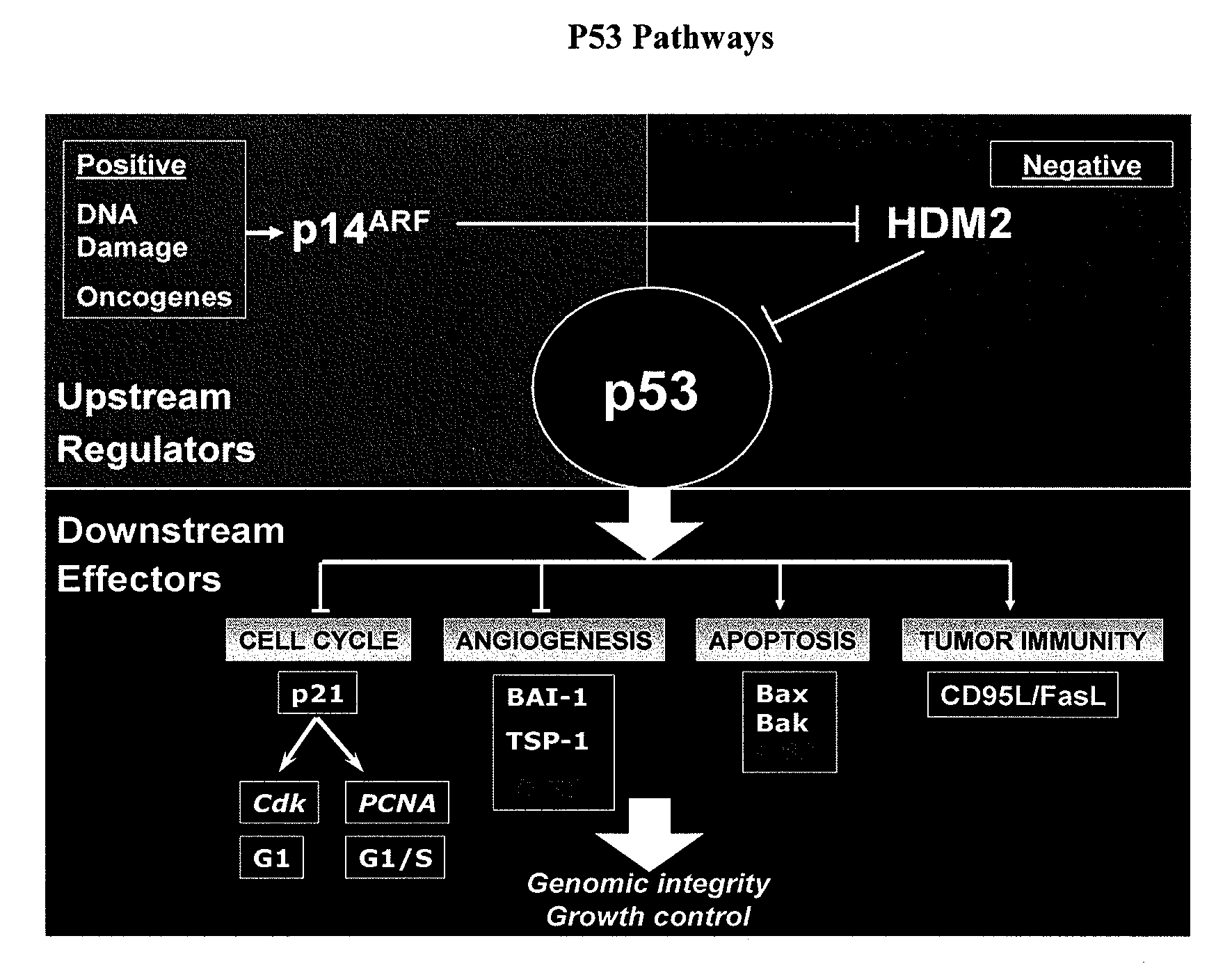Prognostic factors for Anti-hyperproliferative disease gene therapy
a gene therapy and gene therapy technology, applied in the field of gene therapy, can solve the problems of unclear why some patients respond to p53 and other genes, and achieve the effects of reducing tumor size or burden, reducing tumor-associated pain, and reducing metastasis
- Summary
- Abstract
- Description
- Claims
- Application Information
AI Technical Summary
Benefits of technology
Problems solved by technology
Method used
Image
Examples
example 1
Patients and Methods
[0343] Patient eligibility. The two studies were conducted concurrently with identical entry criteria apart from the administered dose of p53 gene therapy (ADVEXIN, Introgen Therapeutics Inc., Houston Tex.). Eligible patients had histologically-confirmed SCCHN, with cytologically-confirmed recurrence, excluding endolaryngeal recurrence, after first-line therapy administered with a curative intent (at least 50 Gy radiotherapy and / or surgery with or without chemotherapy). All lesions in the head and neck region were to be accessible to intratumoral treatment, or if not, any inaccessible lesions had to be separately evaluable and unlikely to impair the patient's ability to complete the study. At least one lesion had to be bidimensionally measurable (≧1 cm×1 cm by physical examination or ≧1 cm×2 cm by CT-scan or MRI). The total area of all bidimensionally measurable lesions had to be ≦30 cm2, and the sum of the longest diameter of each bidimensionally and unidimensi...
example 2
Results
[0350] Between September 1997 and January 2000, 173 patients entered the two studies (T201 and T202) and 164 were treated in 34 centers in Austria, Canada, Finland, Germany, Spain, Switzerland and the USA. One of the treated patients was considered ineligible due to concomitant bronchogenic carcinoma. Hence, there were 163 eligible treated patients (high-dose trial, 3-day arm 52 patients, 6-day arm 53 patients and low-dose trial 58). Patient characteristics were balanced between the 3 treatment groups (Table 1) with the exception that fewer patients at entry in the low-dose study had received chemotherapy during prior treatment (36% versus 64%, p=0.001) and fewer had locally recurrent disease, as opposed to locoregional relapse (31% versus 51%, p=0.021). Treatment characteristics were similar between the groups. A total of 432 cycles were administered for a median of 2 cycles per patient (range, 1 to 48). Fifty-one patients received a single cycle (29%) while 41 patients (24...
example 3
Discussion
[0358] Recurrent disease remains the most common form of treatment failure for patients with SCCHN (Kotwall et al., 1987; Brockstein et al., 2004). Loco-regional recurrence is often associated with severe morbidity due to pain, upper airway obstruction and the resultant difficulties in swallowing and speech. In the majority of cases, recurrent disease is incurable (Kotwall et al., 1987; Brockstein et al., 2004). Palliative surgery is difficult and disfiguring, and re-irradiation is constrained by the limited types of lesions that can be re-treated and the morbidities associated with effective doses. Thus, patients with recurrent SCCHN need novel and less toxic treatments. Currently available therapies provide minimal benefit and result in significant toxicity that can exacerbate local tumor morbidity.
[0359] Advances in our understanding of the molecular biology of cancer have identified novel targets for therapeutic development. As the prototypical tumor suppressor gene,...
PUM
| Property | Measurement | Unit |
|---|---|---|
| diameter | aaaaa | aaaaa |
| diameter | aaaaa | aaaaa |
| temperature | aaaaa | aaaaa |
Abstract
Description
Claims
Application Information
 Login to View More
Login to View More - R&D
- Intellectual Property
- Life Sciences
- Materials
- Tech Scout
- Unparalleled Data Quality
- Higher Quality Content
- 60% Fewer Hallucinations
Browse by: Latest US Patents, China's latest patents, Technical Efficacy Thesaurus, Application Domain, Technology Topic, Popular Technical Reports.
© 2025 PatSnap. All rights reserved.Legal|Privacy policy|Modern Slavery Act Transparency Statement|Sitemap|About US| Contact US: help@patsnap.com



